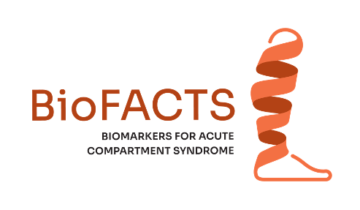
Why is this study needed?
Acute compartment syndrome (ACS) is a serious complication in trauma. The cardinal clinical symptom of ACS is pain, which can be very difficult to differentiate from the pain caused by the fracture. In the absence of objective measures, the decision to perform fasciotomy is often based solely on clinical findings. As a missed ACS is assumed to have a detrimental effect on lower extremity function, fasciotomy is often performed at a low level of suspicion. However, fasciotomy involves a large incision of the skin and compromises the soft tissue envelope around the fractured bone, resulting in profound fracture treatment complications causing impaired lower extremity function on its own. Therefore, correct and timely diagnosis of ACS is of the outmost importance for these patients.
What are the objectives of the BioFACTS study?
BioFACTS-1: Can biomarkers (P-myoglobin and P-CK) be used to predict acute compartment syndrome in patients with traumatic tibial fractures?
BioFACTS-2: What is the functional outcome after
a) a tibial fracture?
b) a tibial fracture and fasciotomy?
c) a missed ACS?
BioFACTS-3: Can the implementation of biomarkers into the diagnostic pathway reduce the number of unnecessary fasciotomies?
Where are we now?
The protocol of BioFACTS-1 has been published in BMJ Open in 2022 and so far we have recruited more than 200 tibial fracture patients. At the current pace, recruitment of BioFACTS-1 should be completed by 2023 and one-year follow-up in 2024. We are currently recruiting more centres for the BioFACTS-2 study and drafting the protocol for BioFACTS-3.
So far, we have published:



